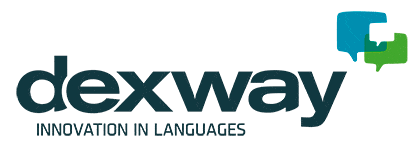How effective is blended learning for languages? We have previously written extensively about the blended learning method and its multiple benefits, both for students and for language and training centers. However, the current scenario requires that we once again highlight this methodology for its ability to solve the situation after the coronavirus pandemic. Both regulated and private training have had to move their classes to blended learning to unload the volume of students per class and comply with the necessary social distance regulations.
More and more people worldwide are choosing to learn English. Recent studies show that there are upwards of 1.5 billion English language learners worldwide. This figure covers all ages, from school children and university learners to young professionals and beyond. There are considerable benefits to learning one or more languages and English learning can be a particularly high priority for individuals in certain industries and locations.
Four Reasons Why B-Learning is effective
Is blended learning for languages the best learning English method? We think it can be incredibly effective. Below we’ve set out four key reasons why.
#1 Blended learning for languages promotes the use of e-learning tools
English e-learning language tools can be an excellent way to learn. Online learning software offers an abundance of exercises, built-in self-assessment tools, and revision resources on demand. Many students find that they learn far better when they are able to use dynamic presentational and online learning tools like these. Furthermore, it is also possible to repeat each lesson or exercise as many times as necessary to polish the learning and correct mistakes. In language learning, repetition is very useful when it comes to consolidating and revising the new knowledge acquired and there is already software that takes this into account and deals with finding those aspects that present the most difficulties in order to insist on them.
#2 Blended learning allows students to study on their own terms
Traditionally most learning has taken place in the classroom. Today students have so many resources at their fingertips outside of the classroom that it makes sense for them to be able to tap into these. E-learning software makes it possible for students to take total control over much of their own learning. They can access it wherever and whenever they choose and are no longer limited to making progress during a small window of classroom time. It is the students who decide at what time of the day they advance with the course and without the need to always be physically in the classroom. This way, you can make the most of the times that are most convenient for you, like your commute to work or other classes, to connect and move forward with the syllabus.
#3 Blended learning offers precious face-to-face learning time
One downside to e-learning is that it can be impersonal. Computer software isn’t as good at reading how a learner is doing as a real-life teacher. Blended learning for languages addresses this by ensuring that learners do get to benefit from presential classes, whether that’s in a traditional classroom environment or in a virtual classroom. The new normal the world is facing in the aftermath of the pandemic calls for mixed methods that unload student classrooms while ensuring quality education.
#4 Blended learning gives valuable personal feedback
The self-assessment of the exercises speeds up the correction process of the teachers, which provides a very complete and real-time feedback from all the students. In traditional teaching it is very difficult for all students to participate and for the teacher to correct her exercises one by one in each class. The tests are also from month to month, because otherwise their correction would be unfeasible. E-learning provides detailed monitoring of each student automatically, with reports that collect all the information that is generated in the courses and that are generated with a click. This feedback is also offered in the Dexway courses for language skills in order to know the weaknesses and strengths of each student and to be able to assign personalized reinforcements that really help them to advance and not generic reinforcements that make them waste time with concepts that they already dominate.
At Dexway we are experts in innovation in language learning and we can accompany you in your digital transformation process for your center.
Our offer includes language courses created to support work in the face-to-face classroom (blended learning); as well as courses available as SCORM licenses for their educational platforms or including an LMS.
Contact us here and see why the most prestigious international educational institutions already trust us.
You may also like:


